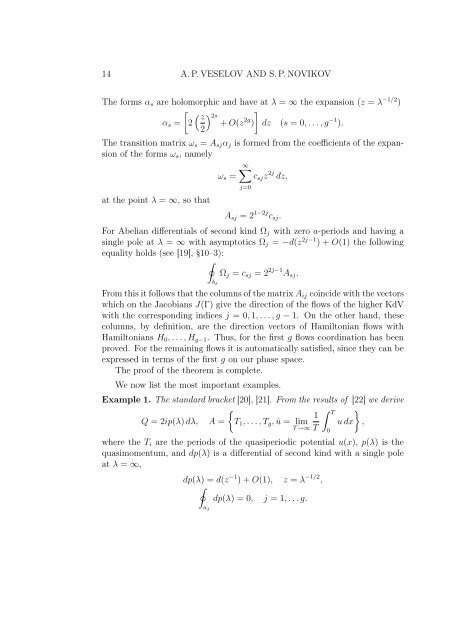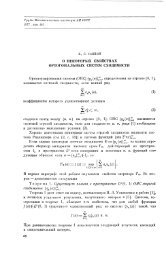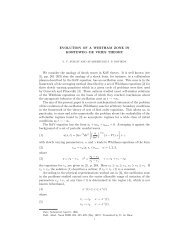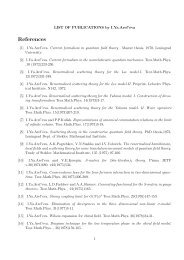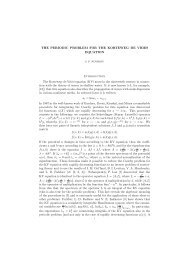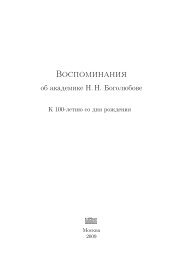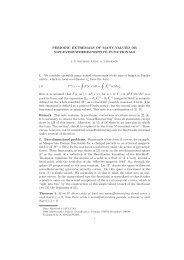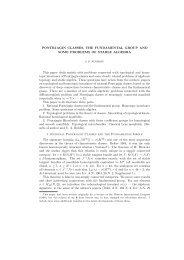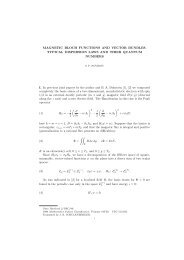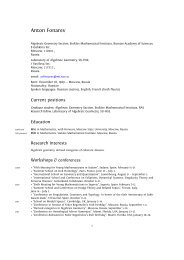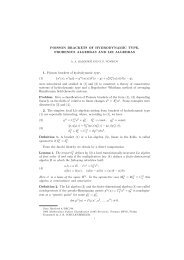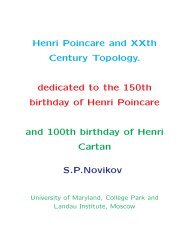POISSON BRACKETS AND COMPLEX TORI
POISSON BRACKETS AND COMPLEX TORI
POISSON BRACKETS AND COMPLEX TORI
You also want an ePaper? Increase the reach of your titles
YUMPU automatically turns print PDFs into web optimized ePapers that Google loves.
14 A. P. VESELOV <strong>AND</strong> S. P. NOVIKOVThe forms α s are holomorphic and have at λ = ∞ the expansion (z = λ −1/2 )[ ( z) 2sα s = 2 + O(z )]2g dz (s = 0, . . . , g −1 ).2The transition matrix ω s = A sj α j is formed from the coefficients of the expansionof the forms ω s , namely∞∑ω s = c sj z 2j dz,at the point λ = ∞, so thatj=0A sj = 2 1−2j c sj .For Abelian differentials of second kind Ω j with zero a-periods and having asingle pole at λ = ∞ with asymptotics Ω j = −d(z 2j−1 ) + O(1) the followingequality holds (see [19], §10–3):∮b sΩ j = c sj = 2 2j−1 A sj .From this it follows that the columns of the matrix A ij coincide with the vectorswhich on the Jacobians J(Γ) give the direction of the flows of the higher KdVwith the corresponding indices j = 0, 1, . . . , g − 1. On the other hand, thesecolumns, by definition, are the direction vectors of Hamiltonian flows withHamiltonians H 0 , . . . , H g−1 . Thus, for the first g flows coordination has beenproved. For the remaining flows it is automatically satisfied, since they can beexpressed in terms of the first g on our phase space.The proof of the theorem is complete.We now list the most important examples.Example 1. The standard bracket [20], [21]. From the results of [22] we derive{∫1 T}Q = 2ip(λ) dλ, A = T 1 , . . . , T g , ū = lim u dx ,T →∞ Twhere the T i are the periods of the quasiperiodic potential u(x), p(λ) is thequasimomentum, and dp(λ) is a differential of second kind with a single poleat λ = ∞,dp(λ) = d(z −1 ) + O(1),∮z = λ −1/2 ,a jdp(λ) = 0, j = 1, . . . g.0


